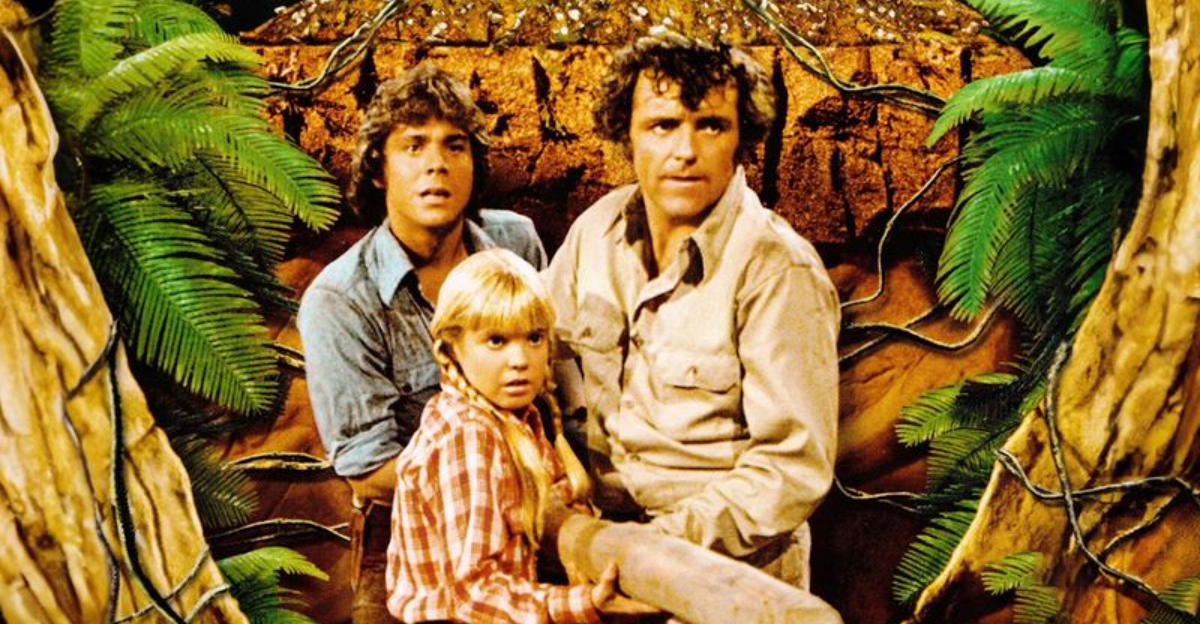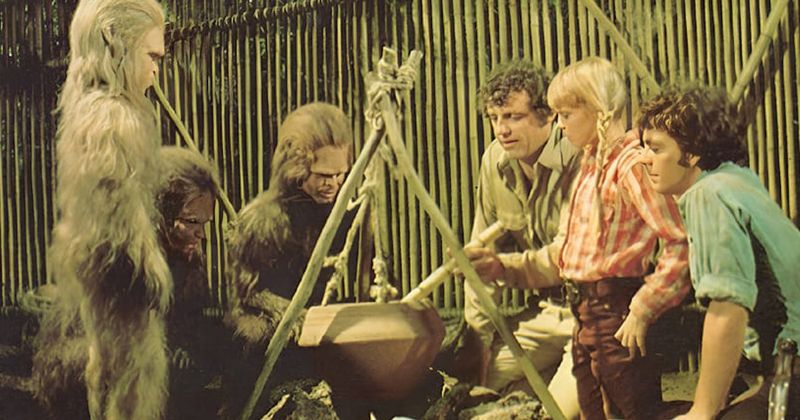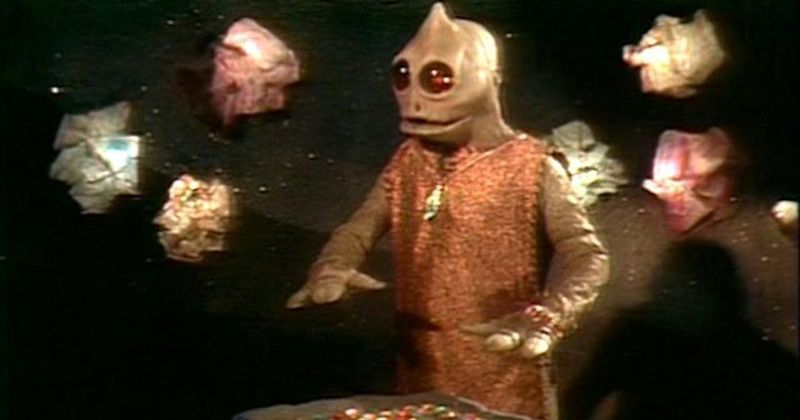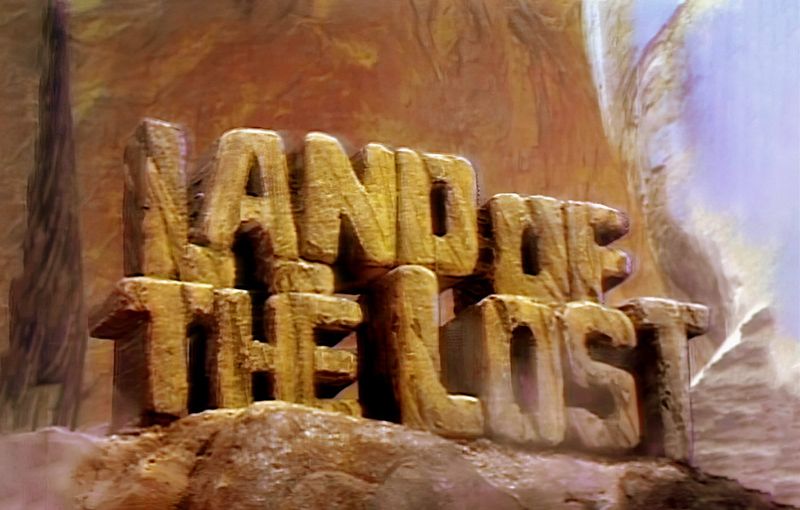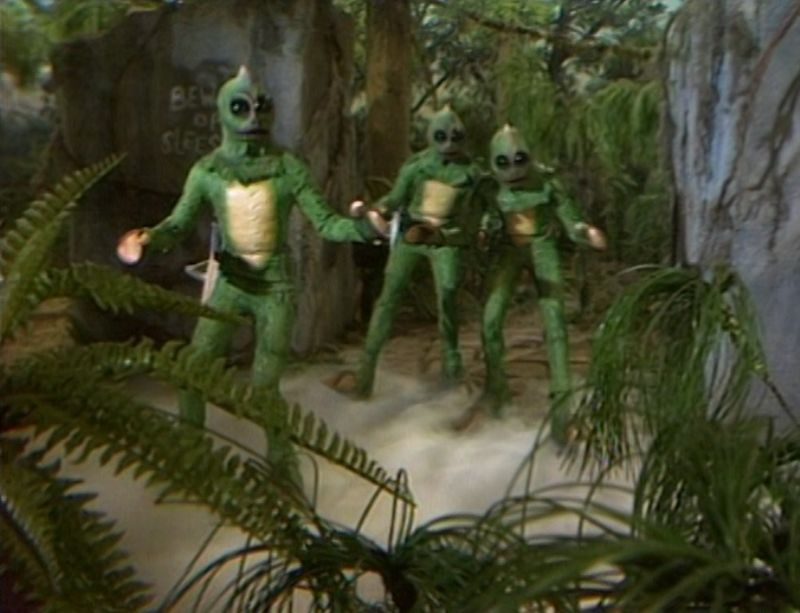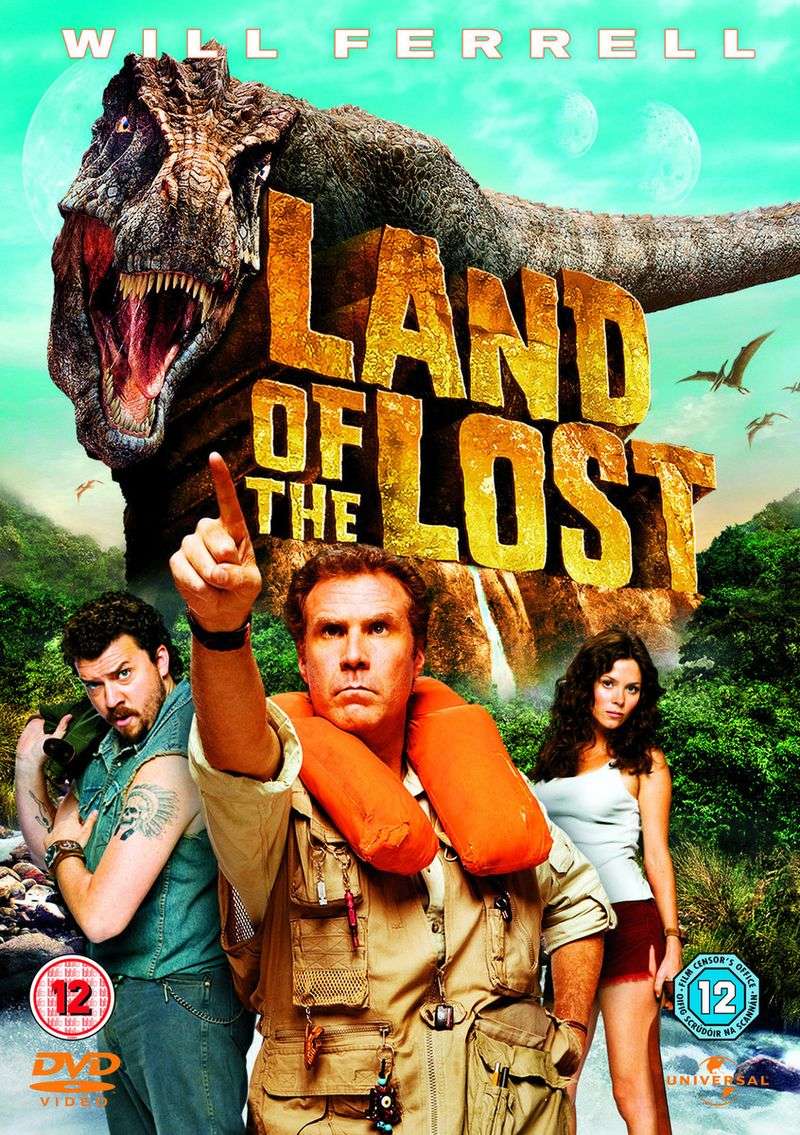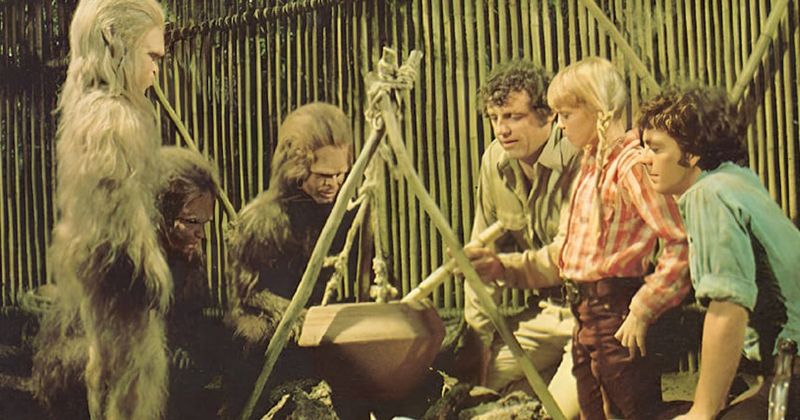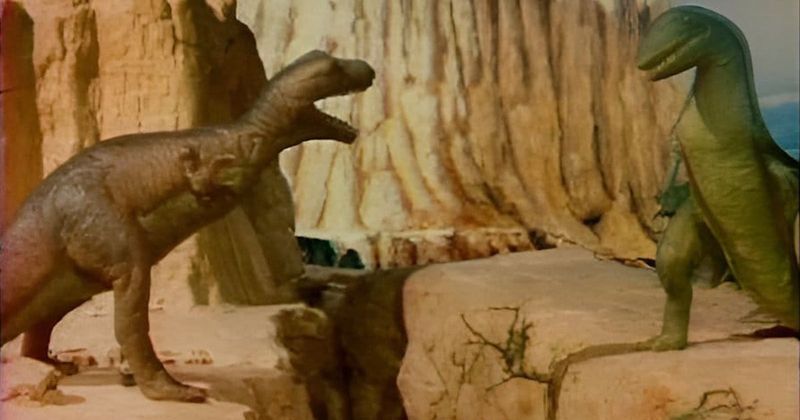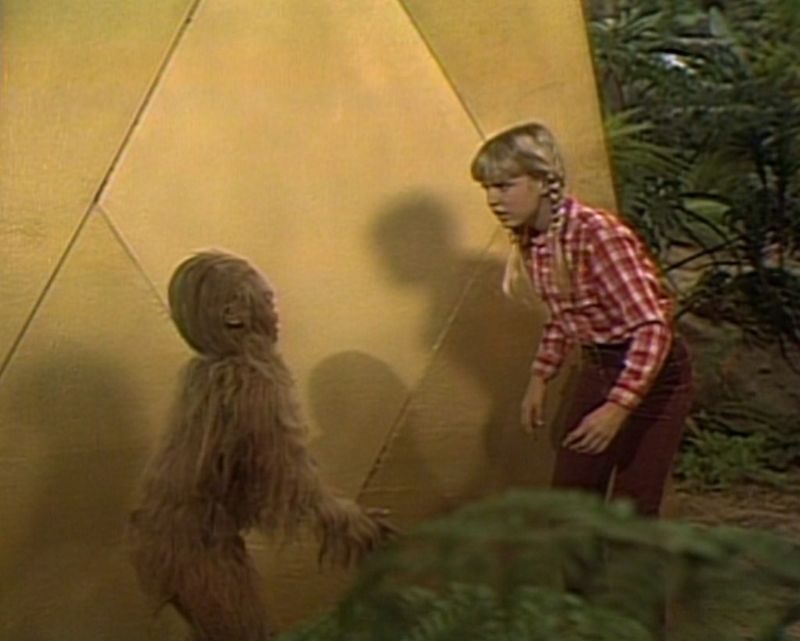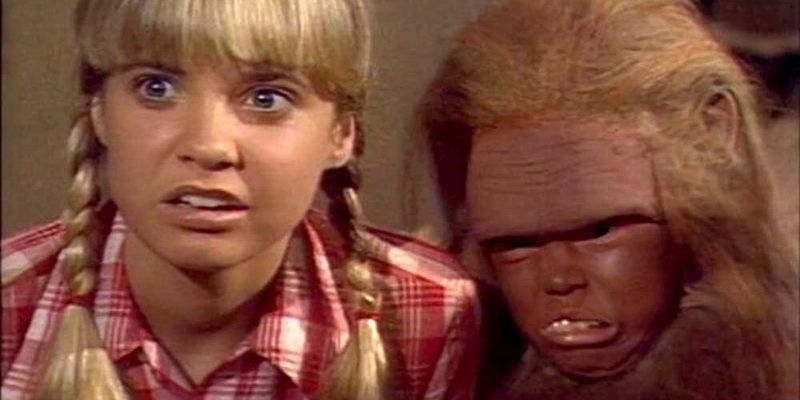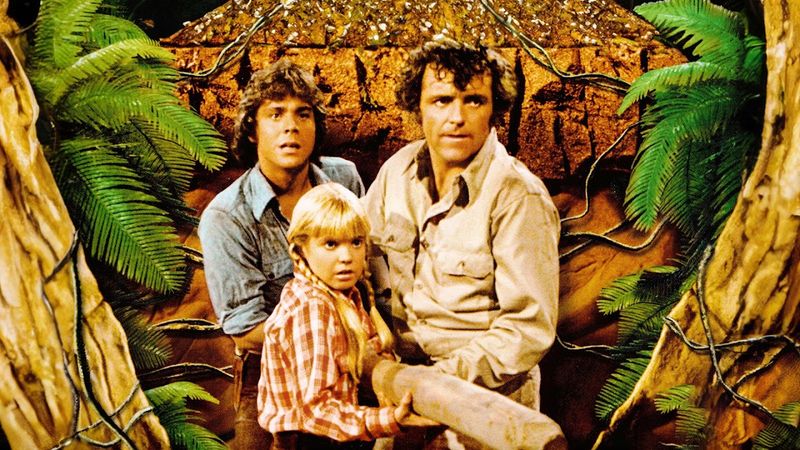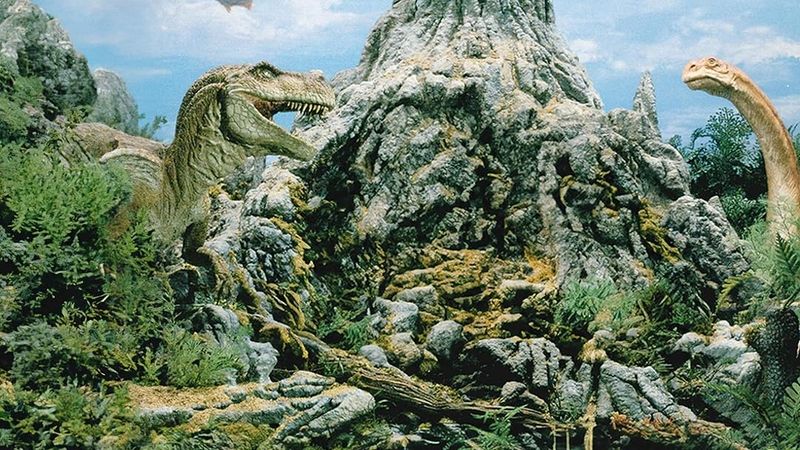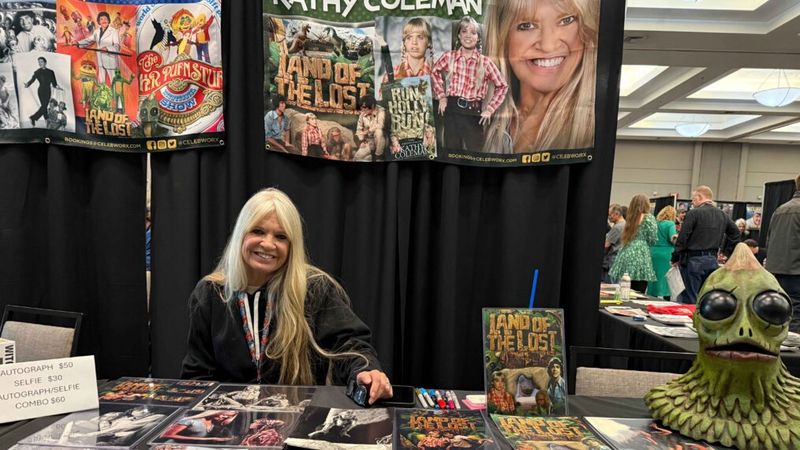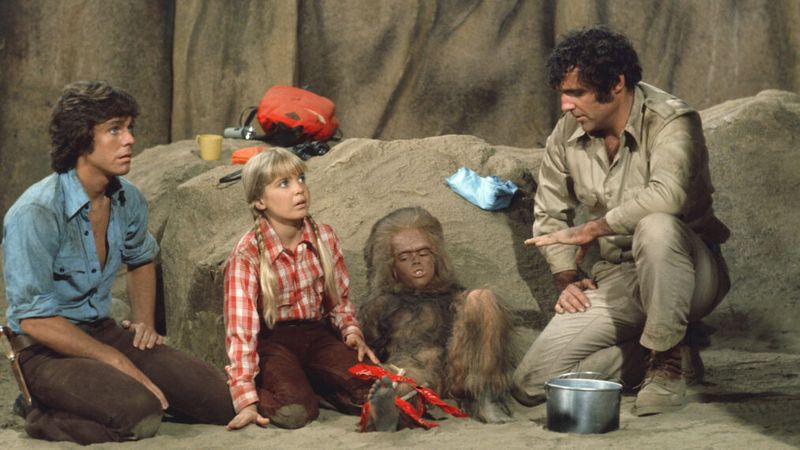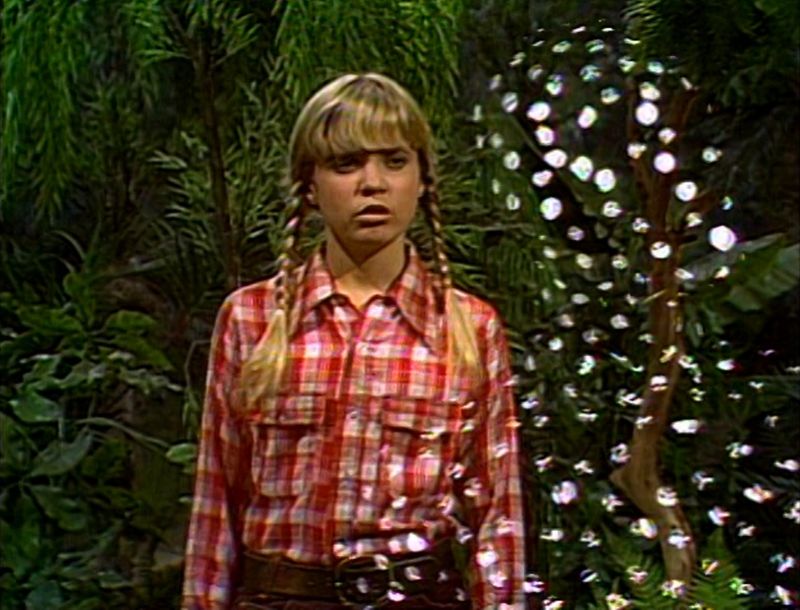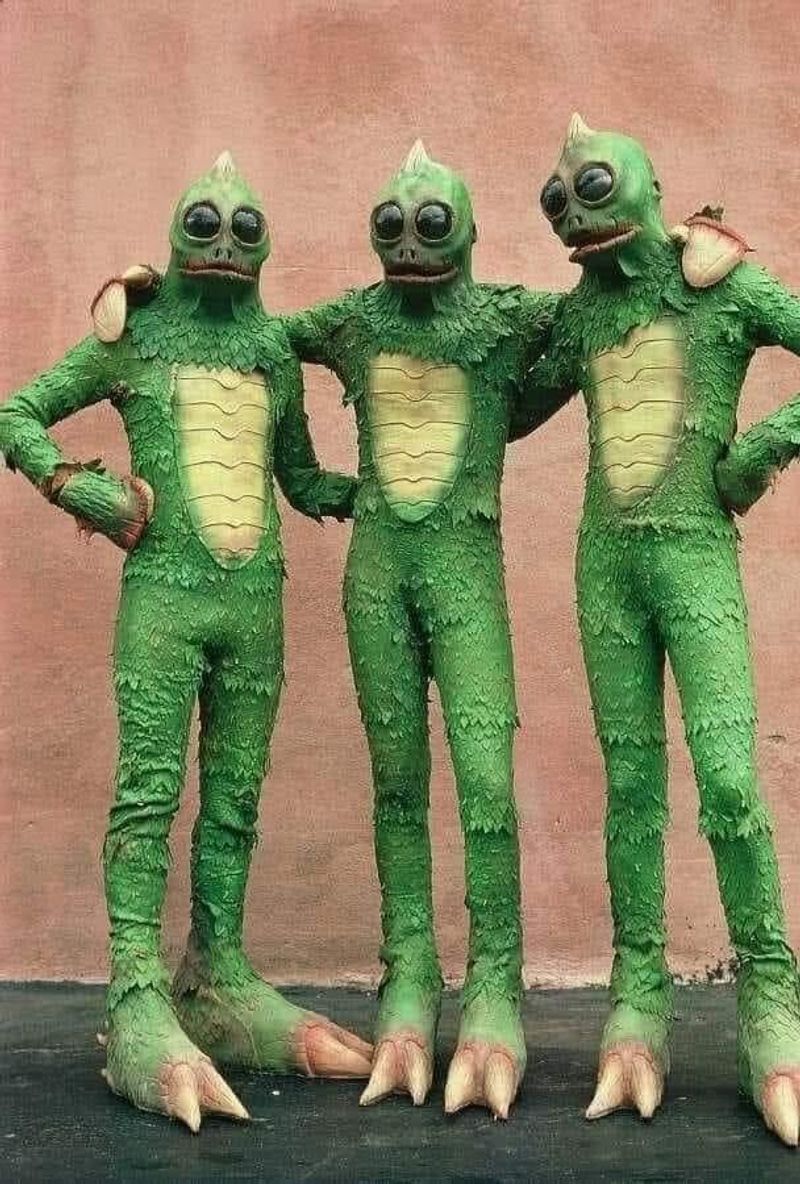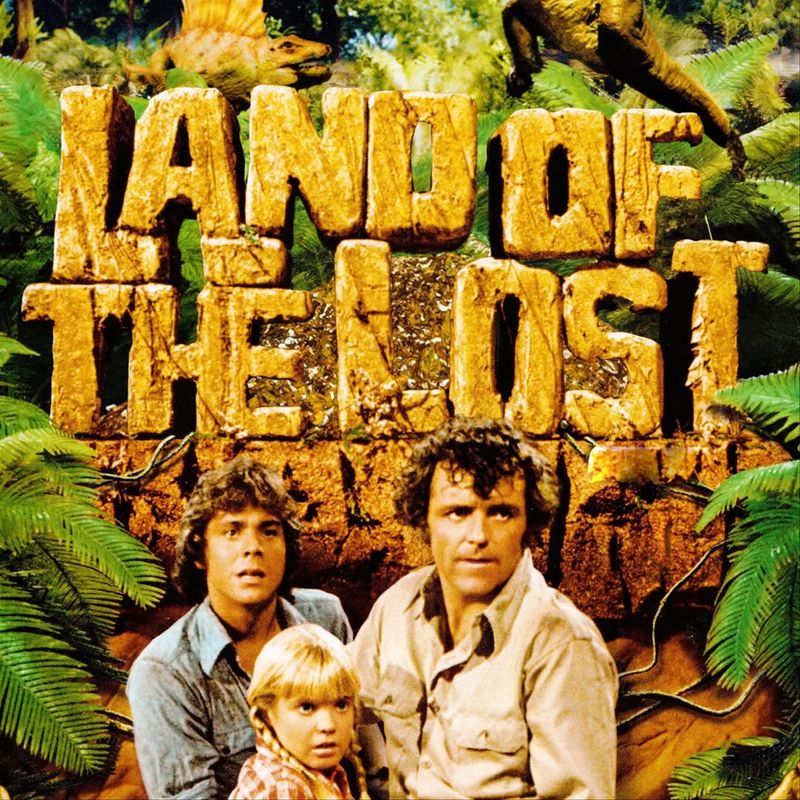Delve into the whimsical and bizarre world of ‘Land of the Lost,’ a unique TV show from the 1970s that captured the imagination of children and adults alike. Combining trippy visuals with surprisingly deep storytelling, the show stood out in its era for its innovative approach to sci-fi in a children’s program. With contributions from renowned sci-fi writers and quirky production techniques, there’s much to uncover about this iconic series.
1. The Show Was Co-Created by a Croft Brother—But Also a Sci-Fi Legend
Sid and Marty Croft, famous for their surreal children’s programming, teamed up with David Gerrold, a writer known for his work on Star Trek, to create ‘Land of the Lost.’ This collaboration brought a unique blend of whimsical and intellectual elements to the show. It wasn’t just another kids’ show; it had depth and complexity, borrowing from Gerrold’s experience with sci-fi storytelling. Their combined efforts made the show groundbreaking, offering something for both children and adults.
2. Some Scripts Were Written by Actual Sci-Fi Greats
Walter Koenig, known for his role as Chekov in Star Trek, and Larry Niven, the author famed for ‘Ringworld,’ contributed scripts to ‘Land of the Lost.’ This was a rare feat for a Saturday morning show, attracting sci-fi enthusiasts and elevating the show’s narrative quality. Their involvement added layers of intrigue and imagination, providing a storytelling depth seldom seen in typical children’s shows. Their episodes introduced complex themes and creative plots, enhancing the show’s cult status.
3. The Dialogue Was Written at an Adult Reading Level—On Purpose
Unlike most children’s shows of its time, ‘Land of the Lost’ didn’t simplify its language. The creators intentionally used vocabulary that challenged viewers, encouraging young audiences to expand their understanding. This decision was made in hopes that children would engage more deeply, learning through context and questioning. By respecting their audience’s intelligence, the show fostered a unique educational experience wrapped in adventure and imagination, setting a high standard for children’s programming.
4. That Iconic Theme Song? It’s a Total Earworm by Design
The catchy theme song of ‘Land of the Lost’ was crafted to stick in your mind long after the show ended. Designed with simplicity and repetition, it became an earworm for a generation of viewers. Its unforgettable melody and lyrics set the stage for the adventure that followed, capturing the essence of the show’s adventurous spirit. This strategic choice ensured that the theme song resonated, making it a nostalgic trigger for those who grew up with the show.
5. The Sleestaks Were Played by College Basketball Players
To portray the towering and menacing Sleestaks, the show’s producers recruited tall college basketball players from UCLA. This casting choice gave the creatures an imposing presence, enhancing their otherworldly menace. The actors shuffled around in cumbersome rubber suits, adding to the eerie, lumbering movement that became the Sleestaks’ signature. This clever use of physicality and athleticism contributed significantly to the show’s ability to immerse viewers in its fantastical world.
6. Will Ferrell’s 2009 Movie Was Inspired by the Show—But the Fans Weren’t Happy
The 2009 ‘Land of the Lost’ movie, starring Will Ferrell, took a comedic approach to the original series, much to the chagrin of dedicated fans. While it introduced the franchise to a new audience, its parody style alienated those who cherished the original’s blend of adventure and seriousness. Despite its intention to pay homage, the film’s over-the-top humor clashed with the essence of the 1970s show. This adaptation highlighted generational shifts in humor and nostalgia.
7. The Show Had a Surprisingly Deep Time Travel Mythology
‘Land of the Lost’ surprised viewers with its intricate time travel mythology. Unlike typical children’s programming, the show explored complex themes like multiple timelines, paradoxes, and pocket dimensions. These elements added a layer of sophistication, inviting the audience to ponder the possibilities of time and space. This depth set the show apart, weaving a narrative rich with speculative fiction that appealed to both young minds and sci-fi aficionados.
8. The Stop-Motion Dinosaurs Took Days to Film—Per Scene
Creating the dinosaur scenes in ‘Land of the Lost’ was a meticulous process involving stop-motion animation. Each frame required careful positioning of models, resulting in just a few seconds of footage after days of work. This labor-intensive technique added a tangible, realistic quality to the creatures, captivating audiences with its artistry. The dedication to this craft demonstrated the team’s commitment to delivering a visually compelling experience, setting a high bar for special effects in children’s television.
9. The Pylons Were Basically Ancient Alien Tech
The mysterious pylons scattered throughout the ‘Land of the Lost’ were more than mere structures; they were depicted as advanced alien technology. These enigmatic constructs served as gateways and control centers, adding a layer of intrigue and wonder to the show’s narrative. Their function within the story foreshadowed modern sci-fi’s fascination with ancient alien theories, making ‘Land of the Lost’ a precursor in exploring these themes.
10. Chaka’s Grunts Were Actually a Real Language
Chaka, the young Pakuni character, communicated using grunts that were actually part of a semi-constructed language. Actor Philip Paley, who played Chaka, worked with producers to develop a consistent system of communication. This attention to detail enriched the show’s world, offering viewers a sense of authenticity and depth. The creation of this language demonstrated the show’s innovative approach to storytelling, turning simple gestures and sounds into a pivotal aspect of its charm.
11. It Was Shot Entirely Indoors—with Some Clever Tricks
Despite its expansive settings, ‘Land of the Lost’ was filmed entirely indoors using soundstages. Through the clever use of fog machines, painted backdrops, and forced perspective, the production team created convincing landscapes. These techniques allowed for a diverse array of environments, from jungles to mountains, all within the confines of a studio. Such ingenuity was necessary to bring the fantastical elements of the show to life, showcasing the creativity and resourcefulness of the crew.
12. There Was a Reboot in the ’90s That Almost Nobody Remembers
In 1991, ‘Land of the Lost’ was rebooted, attempting to capture the magic of the original series. However, it struggled to connect with a new audience, lasting only two seasons. This version lacked the quirky charm and innovative storytelling that made the 1970s show a cult classic. Despite its short-lived run, the reboot serves as a reminder of the original’s enduring influence and the challenges of reviving nostalgic properties for modern viewers.
13. Kathy Coleman (Holly) Still Does Conventions—And Wrote a Memoir
Kathy Coleman, who played Holly Marshall on ‘Land of the Lost,’ remains a cherished figure among fans. She frequently attends comic conventions, sharing behind-the-scenes stories and engaging with those who hold the show dear. In her memoir, she offers a personal glimpse into the adventures and challenges of filming the series. Her continued presence in the fan community underscores the lasting impact of ‘Land of the Lost’ and its place in pop culture.
14. The Show Was Almost Canceled After Season 1
Despite its popularity, ‘Land of the Lost’ faced cancellation after its first season due to low ratings. However, a flood of fan mail and the support of network executives convinced the creators to continue the series. This decision allowed the show to develop its iconic status, affirming its place in television history. The passionate response from viewers highlighted the show’s ability to captivate an audience, proving its worth beyond mere numbers.
15. The Zarn Was One of TV’s First “Anti-Gravity” Characters
The Zarn, an intriguing antagonist in ‘Land of the Lost,’ was among television’s first attempts at depicting an anti-gravity character. Created using reflective materials and inventive camera work, Zarn’s floating, glowing appearance captivated audiences. This innovative portrayal predated CGI, showcasing the show’s commitment to pushing creative boundaries. The Zarn’s unique representation added to the show’s allure, offering a glimpse into the possibilities of visual effects before the digital age took hold.
16. The Sleestak Hiss Was Made with a Shower Hose
The eerie hiss of the Sleestaks became an iconic sound, created using a surprisingly simple method. A sound designer ingeniously blew through a vacuum cleaner hose to achieve the signature creepy effect. This resourceful approach exemplified the show’s creativity, turning everyday objects into tools for storytelling. The distinct hiss contributed to the Sleestaks’ menacing presence, enhancing their role as formidable foes and adding to the show’s mystique.
17. It’s Still One of the Most Rewatched Kids’ Shows of the ’70s
‘Land of the Lost’ continues to enchant new generations, thanks to streaming platforms and YouTube. Its blend of adventure, imagination, and innovation keeps it among the most rewatched shows of its time. Families gather to experience the unique charm and wild narratives that defined the series. The show’s ability to capture hearts, both then and now, highlights its timeless appeal and enduring legacy in the realm of children’s entertainment.
